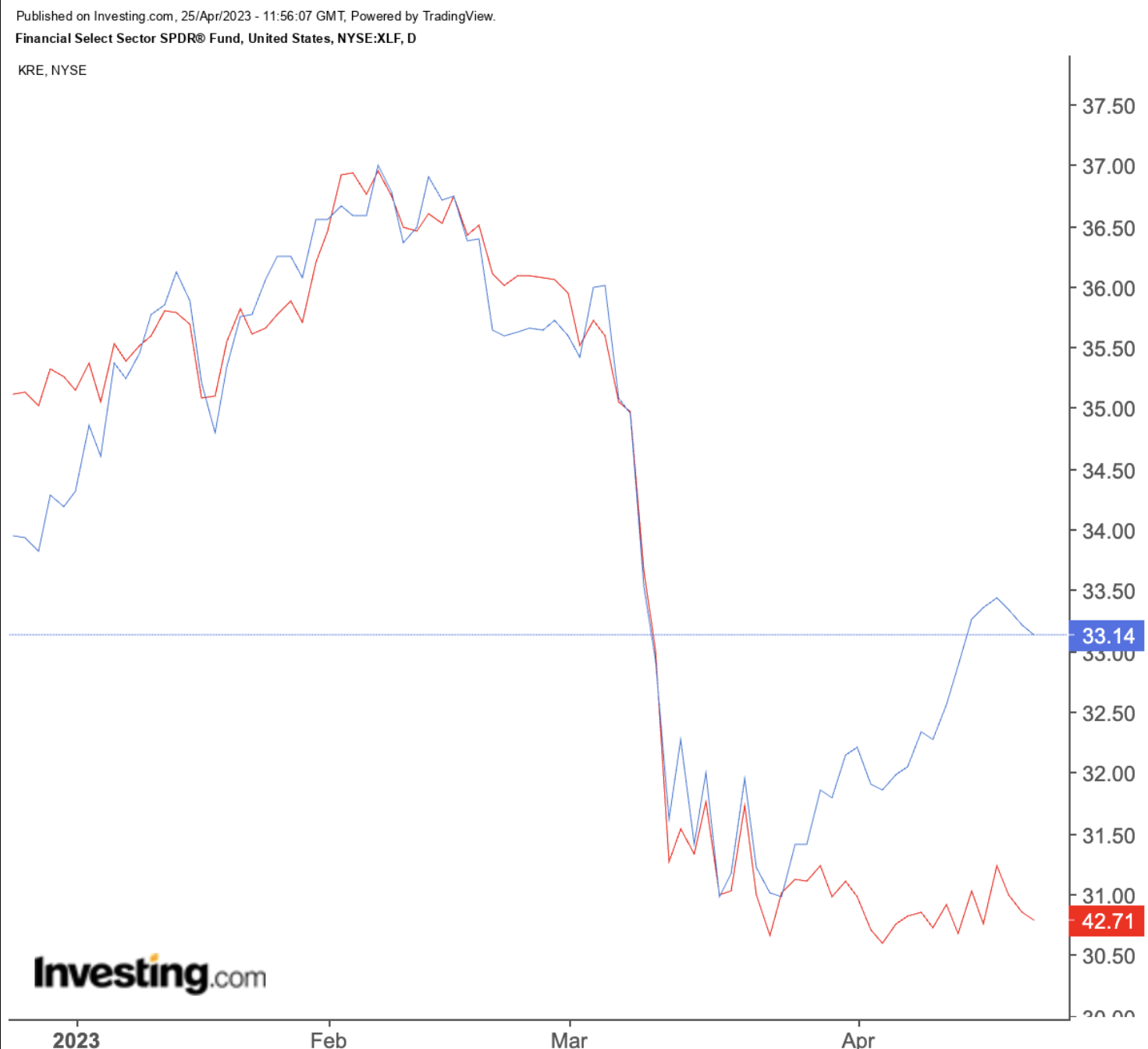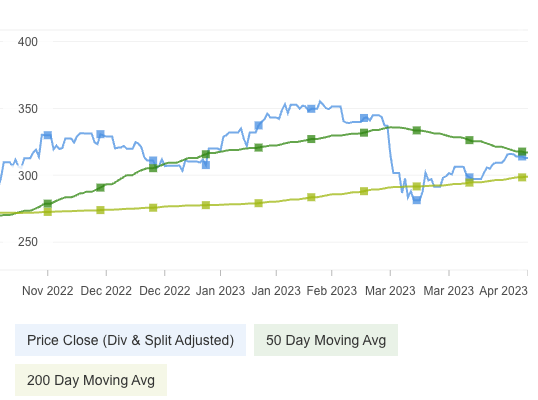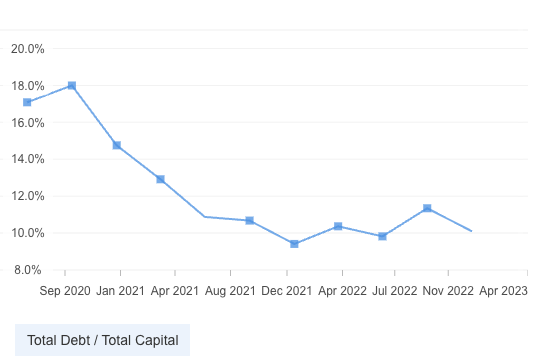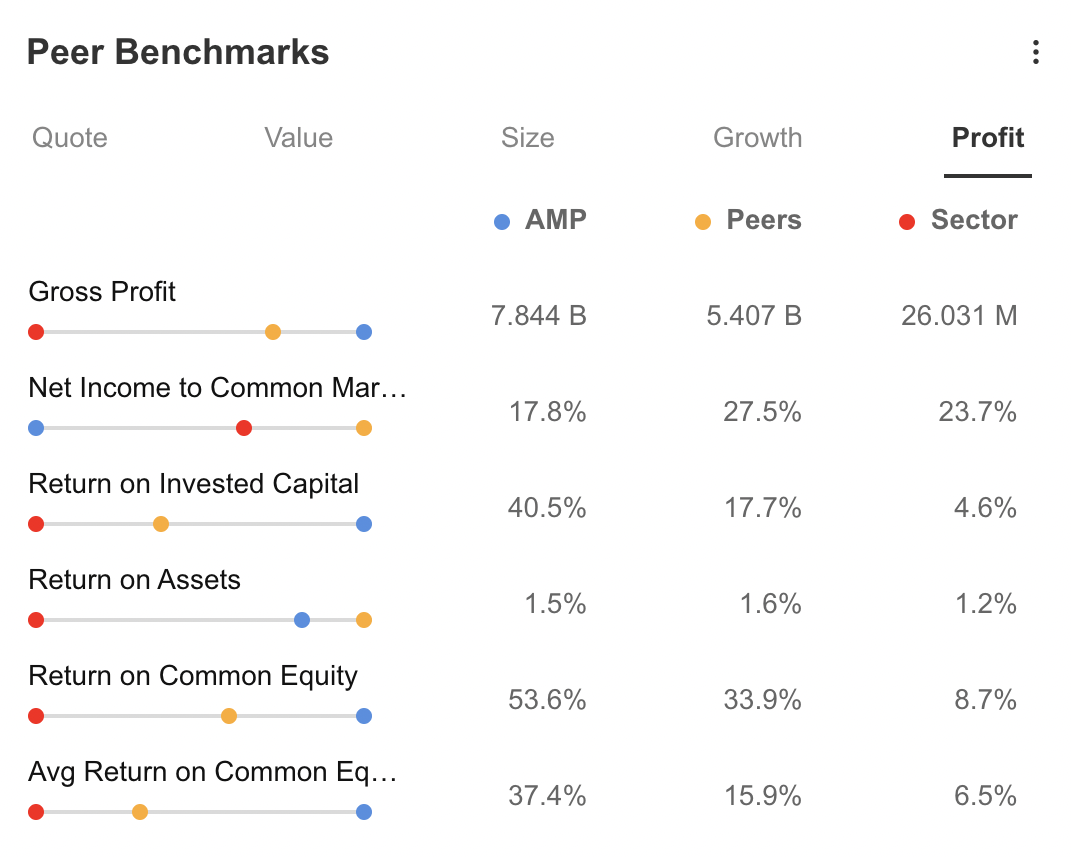Here’s Why You Should Buy Ameriprise Financial Post-Earnings Dip
2023.04.25 09:26
Financials have substantially rebounded during the last month on the back of better-than-expected earnings from the big banks and indications that the Fed will keep supporting the sector with liquidity in spite of its inflation-fighting efforts.
Recent price action indicates that investors are still pricing in a better performance for the big banks over smaller, regional ones — a direct consequence of the SVB and Signature Bank failures. As a matter of fact, regional banks via S&P Regional Banking ETF (NYSE:) have parted ways with the broader benchmark ETF Financial Select Sector Fund (NYSE:).  XLF (Blue) Vs. KRE (Red) Daily Chart
XLF (Blue) Vs. KRE (Red) Daily Chart
But while the market keeps shunning smaller financial companies, there’s no actual indication that the US financial system will become totally centralized in the too-big-to-fail banks in any foreseeable future. Regional banks play a fundamental role in the US financial system and, despite the recent failures, should continue to do so.
In fact, experts argue that while we will likely see more bank failures in the near future, we could also be witnessing the rise of super-regionals, i.e., regional banks that will overtake their smaller, riskier counterparts.
The situation also seems to have stabilized in the broader US financial spectrum. While dealmaking and venture capital funding remain low by last decade’s standards, we are likely to witness the birth of a new long-term cycle of innovation as more companies manage to adapt to higher capital costs. And despite some economists arguing that economic expansion is directly linked to access to cheap capital, I’d argue that 13 years of net-zero interest rates had driven discipline out of the innovation process. Capital constraints should likely reverse that; thus, the new cycle could create less, yet more resilient companies.
This indicates that there are several long-term opportunities in the US financial sector amid the recent selloff for those willing to the research work. On the other hand, investors shouldn’t go buying the sector’s dip willy-nilly, as risks remain elevated for some companies.
By using the InvestingPro tool, investors can take a deep look at all these companies’ fundamentals and separate the winners from the losers. That’s how I decided to add the latest stock to my portfolio right after yesterday’s : Ameriprise Financial (NYSE:).
Ameriprise Financial
Founded in 1894, Minneapolis, Minnesota-based Ameriprise provides financial products and services to clients in the US and internationally through four segments: Advice and Wealth Management, Asset Management, Retirement and Protection Solutions, and Corporate.
Despite beating analysts’ consensus EPS estimates and rising Quarterly Dividend by 8% to $1.35 on its earnings report last night, the company was selling off by -3.8% in pre-market trading on Tuesday.
According to InvestingPro’s overview, some of the company’s main attributes as of now are:
- Management has been aggressively buying back shares
- Strong earnings should allow management to continue dividend payments
- Strong return over the last five years
InvestingPro users would also know firsthand that the company has received a positive upgrade from Evercore this morning. They’d also know that the company had received eight positive EPS revisions and only two negatives in the 90 days that preceded its earnings report.
Prior to Thursday’s market opening, the company was down 8.86% in the last three months and up 11.27% in the last 12 months. On the technical chart, the stock shows strong upside momentum, having regained its 200-day Simple Moving Average (SMA) to trade right below its 50-day SMA.

AMP Price Chart Vs. Moving Averages
Source: InvestingPro
The company is also significantly undervalued according to the quantitative models in InvestingPro and could see an upside of roughly 26% over the next 12 months to its fair value of $384.02/share.

Source: InvestingPro
Differently from riskier competitors, AMP’s Debt and Financial Leverage have been significantly shrinking since 2021, a sign that the company has managed interest rate hike risks properly.

AMP Debt and Financial Leverage
Source: InvestingPro
That’s one of the reasons why the company has a great financial health score, according to InvestingPro.

Source: InvestingPro
AMP has been also delivering significantly higher gross profit, return on invested capital and return on equity than its competitors, as the chart below shows.
 AMP Gross Profit, Return on Invested Capital, Return on Equity
AMP Gross Profit, Return on Invested Capital, Return on Equity
Source: InvestingPro
Bottom Line
While it’s difficult to assess the short-term movement of AMP due to high sector risks, fundamentals shown on InvestingPro’s scanner indicate that the stock is an excellent option for those looking to score above-average long-term returns.
All things considered, the stock is a downright buy at current levels, and savvy investors could take advantage of the current dip and scoop up shares now.
***

Find All the Info You Need on InvestingPro
Disclosure: The author is long on AMP.








